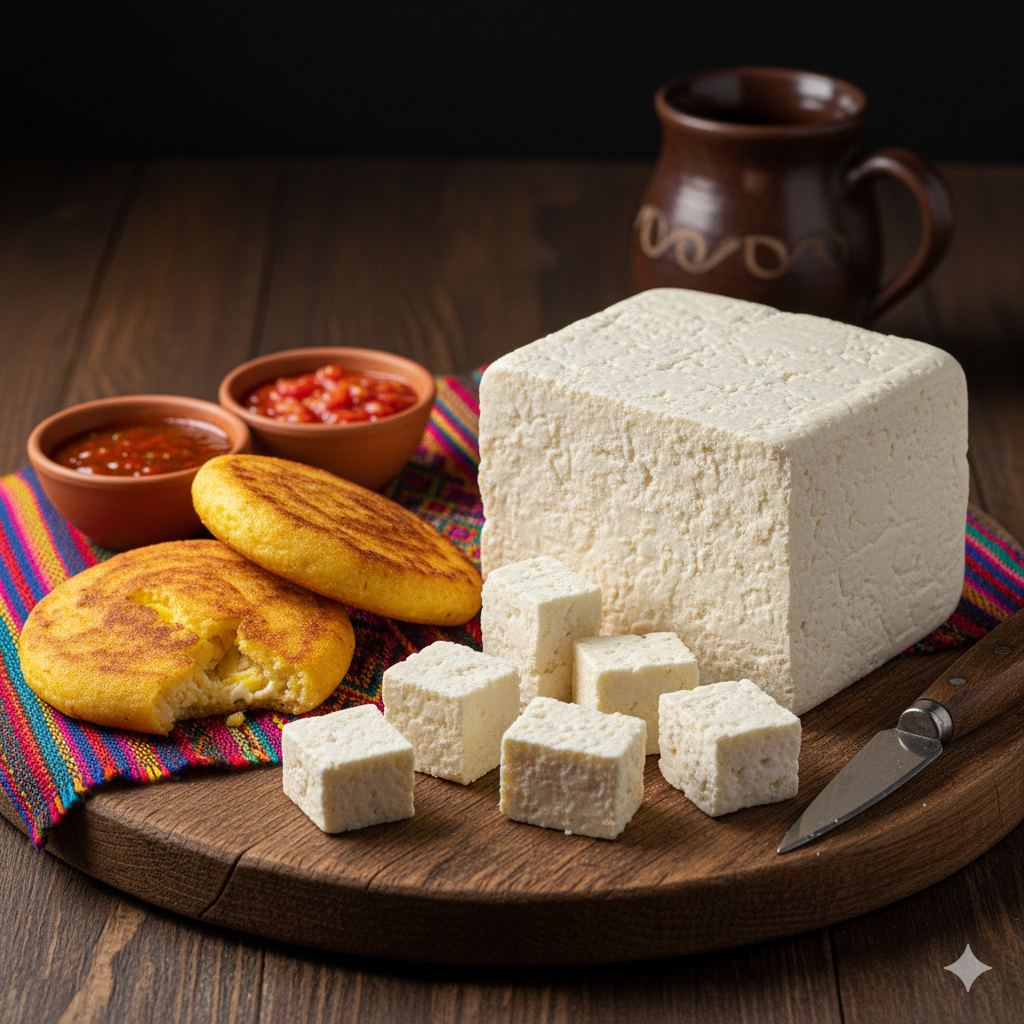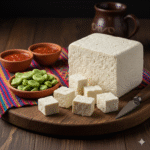If you’ve ever explored the coastal cuisine of Colombia, you’ve probably heard about queso costeño, the salty and delicious cheese that defines many dishes from the Caribbean region. Known for its crumbly texture and bold flavor, costeño cheese is one of the most iconic ingredients in Colombian cooking. Whether you’re searching for a queso costeño substitute, wondering what queso costeño is in English, or trying to find queso costeño where to buy, this guide covers everything you need to know.
What Is Queso Costeño?
Queso Costeño—sometimes written as queso costeno or even costeno cheese—is a fresh, salty, semi-hard cheese made from cow’s milk. It originates from Colombia’s Caribbean coast, especially in regions like Atlántico, Bolívar, Sucre, and Córdoba, where dairy traditions blend with tropical flavors.
Unlike aged cheeses, queso costeño is made, salted heavily, and eaten fresh. It crumbles easily but still holds shape, making it perfect for sprinkling over dishes or slicing for snacks.
Queso Costeño in English
If you’re looking for queso costeño in English, the direct translation is:
👉 “Coastal Cheese” or “Colombian Coastal Cheese.”
But most English speakers refer to it simply as costeño cheese.
Flavor & Texture: What Makes It Special?
Queso costeño is known for:
-
A salty punch
-
A firm but crumbly texture
-
A fresh, milky aroma
-
A slightly tangy finish
It’s not as dry as aged cheeses, not as soft as fresh farmer cheese, and not as melty as mozzarella. Instead, it sits somewhere in the middle—semi-hard, salty, rich, and satisfying.
Many Colombians compare it to feta because of its saltiness, but its texture and flavor are unique.
How Queso Costeño Is Made
The traditional process—still used by many small producers along the Caribbean coast—includes:
-
Fresh cow’s milk is warmed.
-
Rennet or natural cultures help the milk curdle.
-
Curds are separated and lightly pressed.
-
Generous amounts of salt are added—much more than most cheeses.
-
The cheese is shaped into blocks and left to firm slightly.
This heavy salting is not just for flavor—it helps preserve the cheese in tropical climates where refrigeration hasn’t always been available.
Popular Ways to Eat Costeño Cheese
Colombians enjoy queso costeño in a wide range of dishes. Some favorites include:
1. Arepas
A warm arepa topped with crumbled costeño cheese is a breakfast staple on the coast.
2. Bollo de Yuca or Bollo de Mazorca
These steamed corn or cassava rolls become even better with salty cheese on top.
3. Suero Costeño (Cream)
A fermented coastal cream often paired with costeño cheese for extra flavor.
4. Fried Plantains
Crispy plantains topped with the cheese create a perfect mix of sweet and salty.
5. Snacks & Platters
Many families enjoy costeño cheese with fruit, bread, or even coffee.
Its versatility is one of the reasons queso costeño colombiano holds such a strong place in Colombian food culture.
Queso Costeño Substitute (Best Alternatives)
If you can’t find it locally, you may wonder about the best queso costeño substitute or costeño cheese substitute. Thankfully, several cheeses come close:
1. Feta Cheese
Closest in saltiness and crumbly texture.
2. Cotija (Mexican Cheese)
Very salty and firm, good for sprinkling.
3. Farmer’s Cheese
Mild, crumbly, and fresh—add extra salt for authenticity.
4. Queso Fresco (Heavily Salted)
More common in stores, but salt it further to match costeño style.
5. Halloumi
Not crumbly, but similar firmness and salt level.
None are perfect matches, but these substitutes work well in recipes.
Queso Costeño Where to Buy
Finding queso costeño where to buy depends on your location:
In Colombia
You can find it in:
-
major supermarkets
-
open-air markets
-
small local dairy shops
-
Caribbean coast specialty stores
In the U.S. & Other Countries
Look in:
-
Latin American grocery stores
-
Colombian bakeries or restaurants
-
International markets with cheese sections
-
Online retailers specializing in Latin foods
Some brands now export queso costeño colombiano, but availability varies.
Why Queso Costeño Matters in Colombian Culture
On Colombia’s coast, this cheese is more than just food—it’s identity. For coastal families, breakfast doesn’t feel complete without it. Food vendors sell arepas de queso costeño on nearly every street corner, and many homes still make their own small batches.
It connects people to regional traditions and brings a sense of warmth and community to every meal. Whether eaten alone, melted over plantains, or crumbled on fresh arepas, queso costeño carries the flavor of the Caribbean in every bite.
Final Thoughts
Queso costeño remains one of Colombia’s most iconic cheeses: salty, fresh, semi-hard, and bursting with coastal character. Whether you’re learning to cook Colombian dishes, searching for the best queso costeño substitute, or simply curious about this beloved ingredient, it’s a cheese worth discovering.
If you’re lucky enough to find it—or taste it in Colombia—you’ll understand why costeño cheese has become a symbol of Caribbean flavor and culinary pride.



